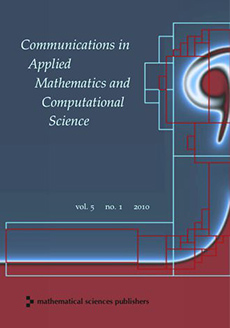Abstract
We consider the coupled motion of a passive interface separating two immiscible fluids of different viscosities. There are several applications where the velocity of the two fluids is needed everywhere within the domain. Examples include the transport of bacteria and diffusing substances within a biofilm matrix and the transport of cations throughout the mucociliary and periciliary layer in the lung lining. In this investigation, we use a hybrid approach which employs the boundary integral method to determine the interface velocity and the method of regularized stokeslets to determine the velocity elsewhere in the domain.
Our approach capitalizes on the strengths of the two methods, yielding an intuitive, efficient procedure for determining the velocity of a two-fluid system throughout the domain. A key feature of the method is the extension to two-fluid systems with varying viscosity. We describe the results of three numerical simulations designed to test the numerical method and motivate its use.
Citation
Nicholas Cogan. "Hybrid numerical treatment of two-fluid problems with passive interfaces." Commun. Appl. Math. Comput. Sci. 2 (1) 117 - 133, 2007. https://doi.org/10.2140/camcos.2007.2.117
Information





